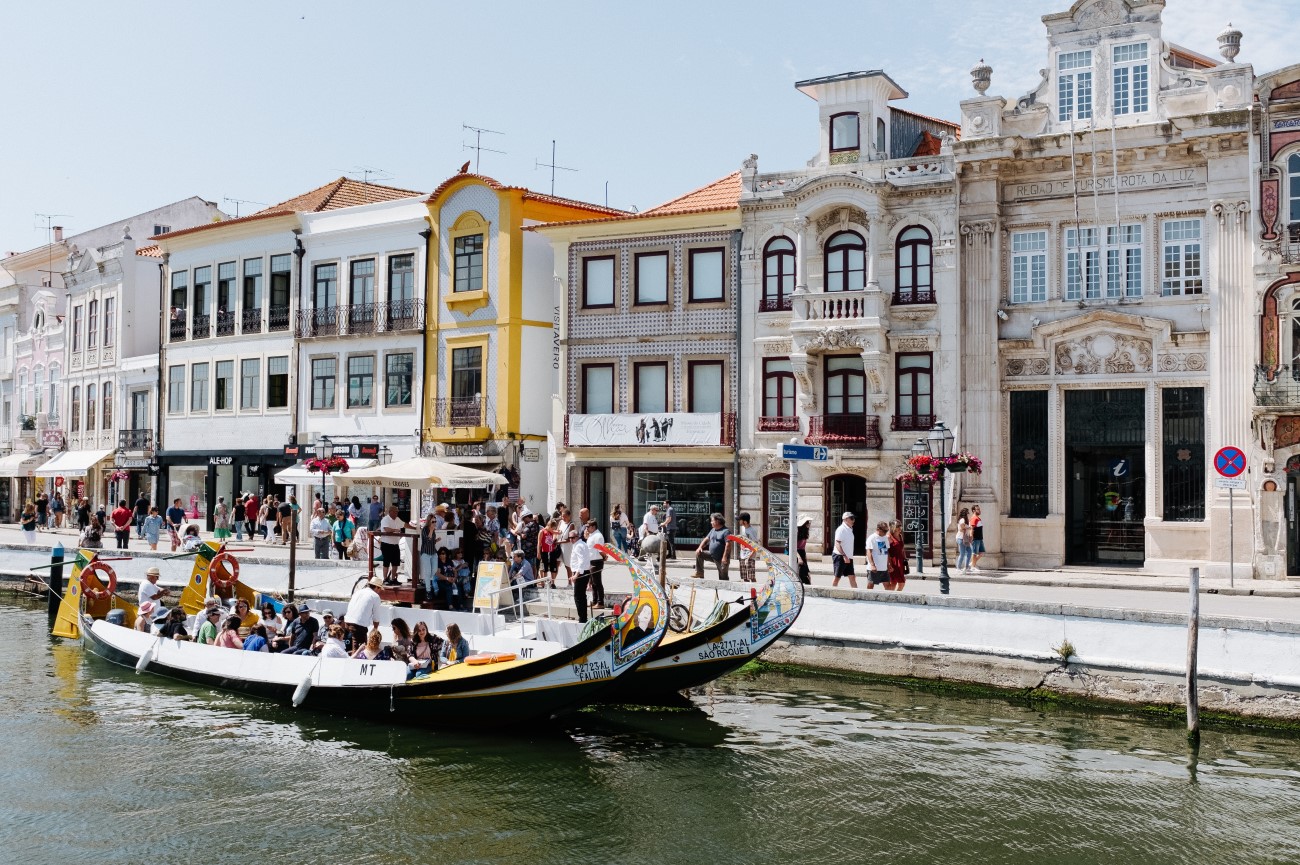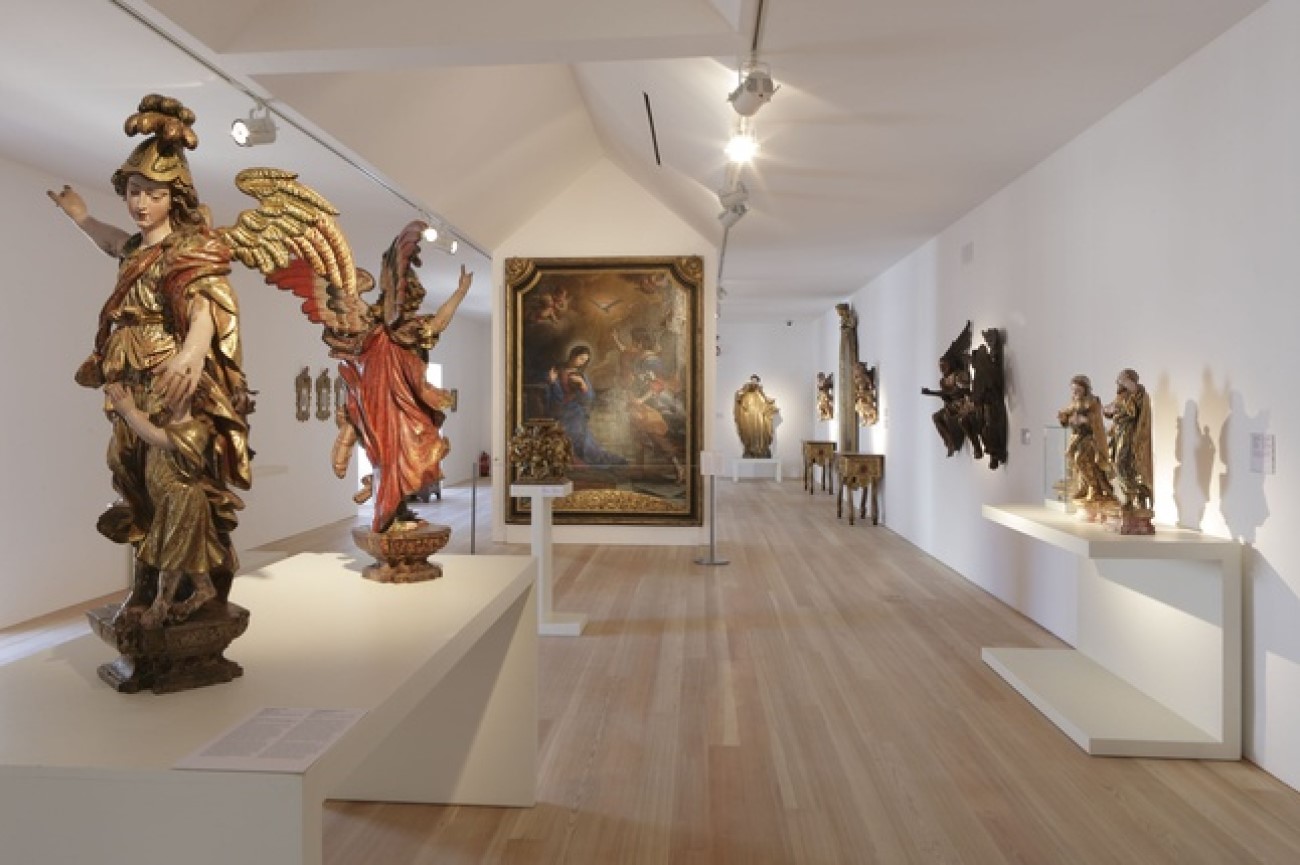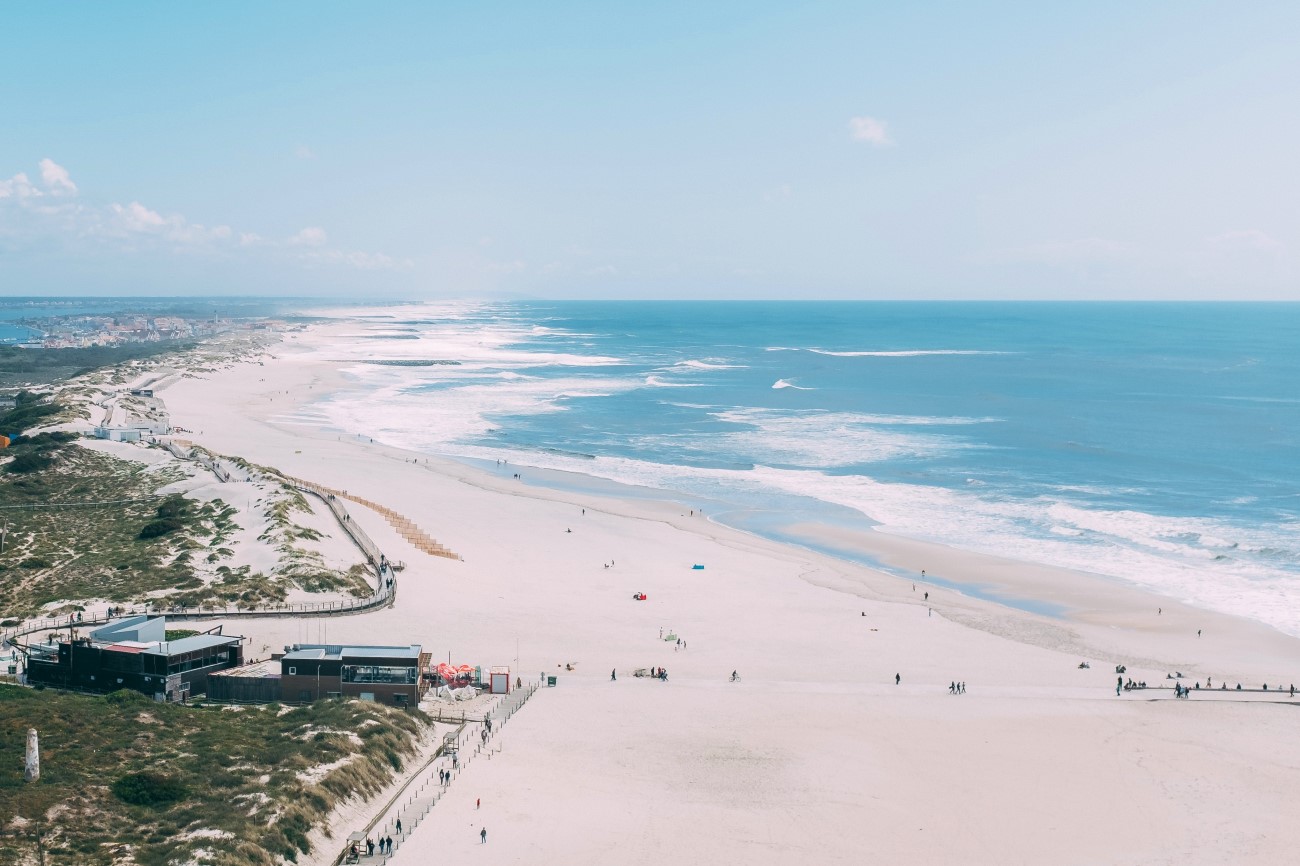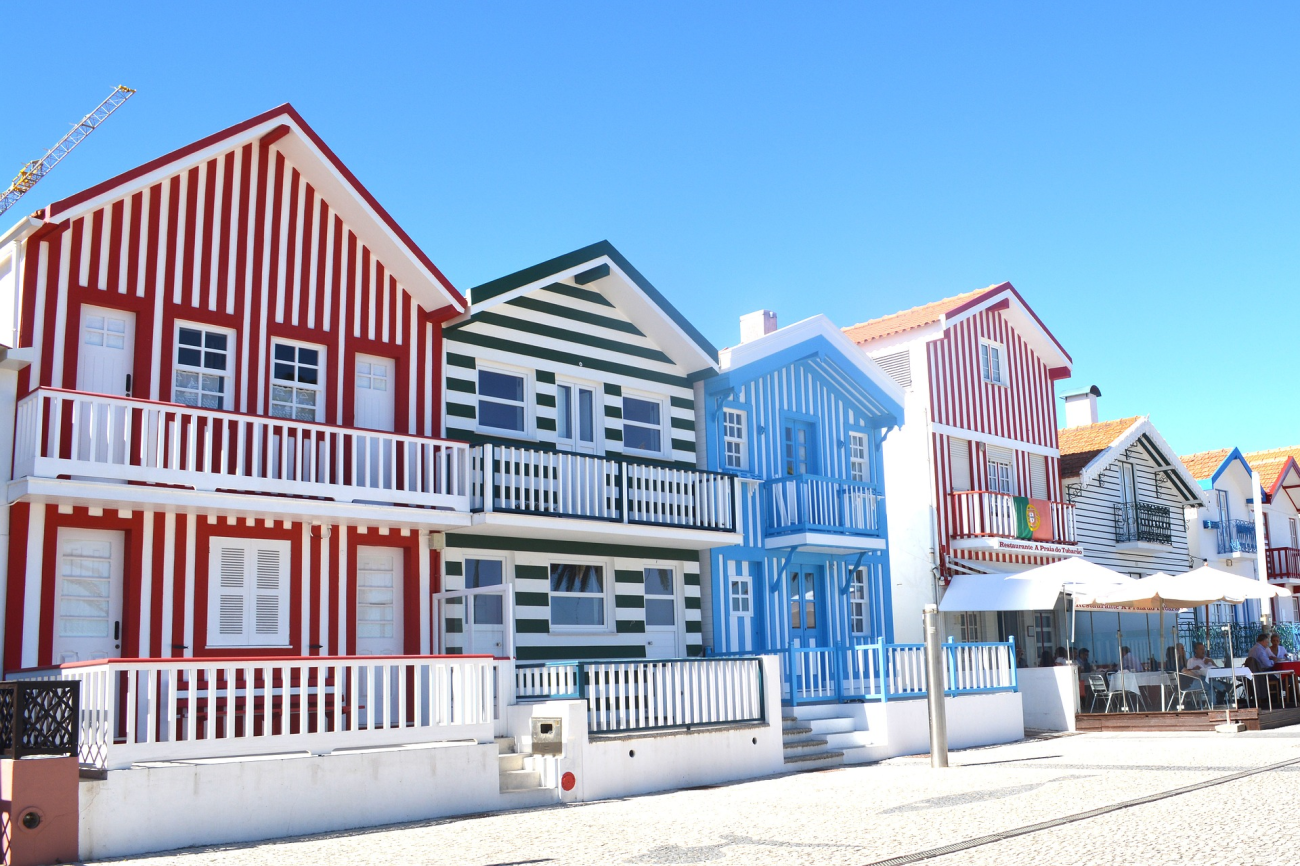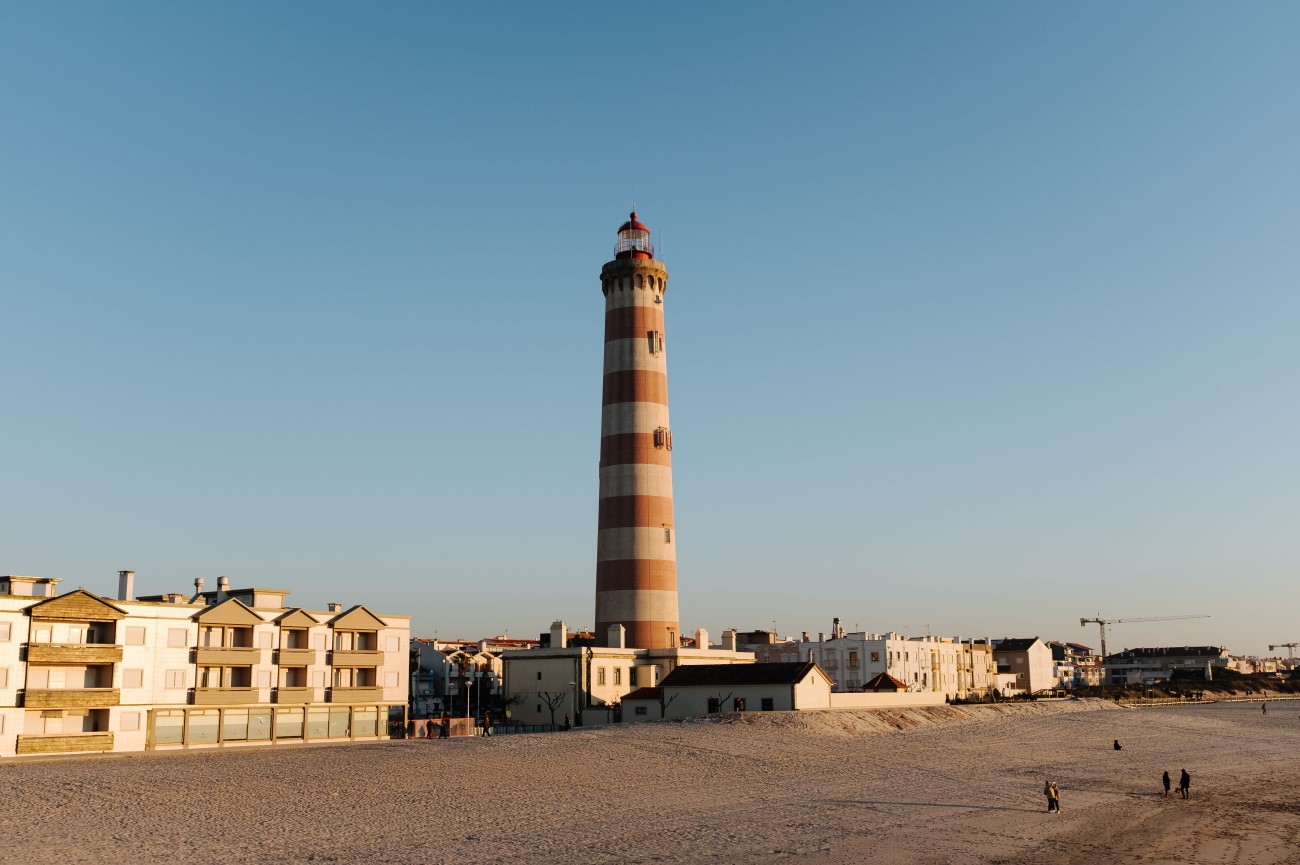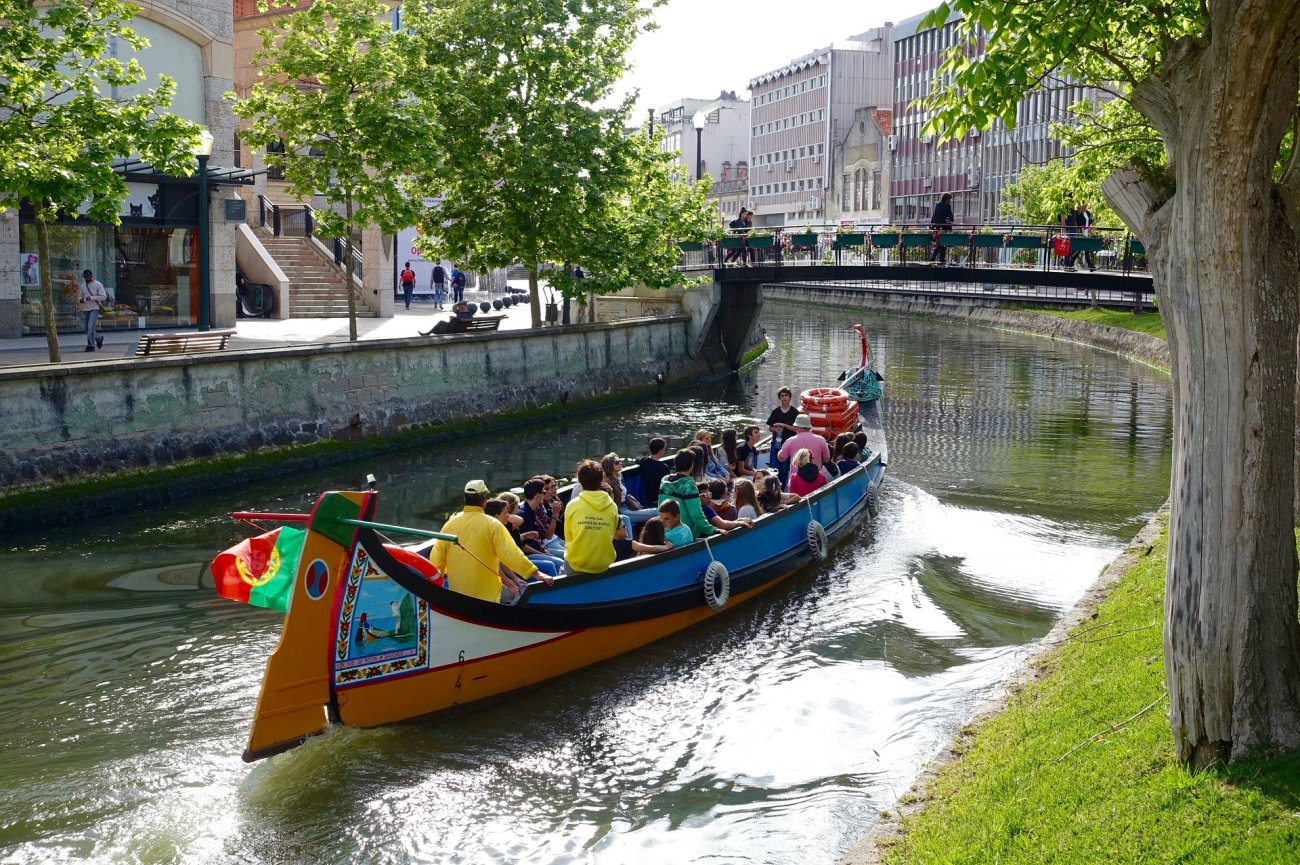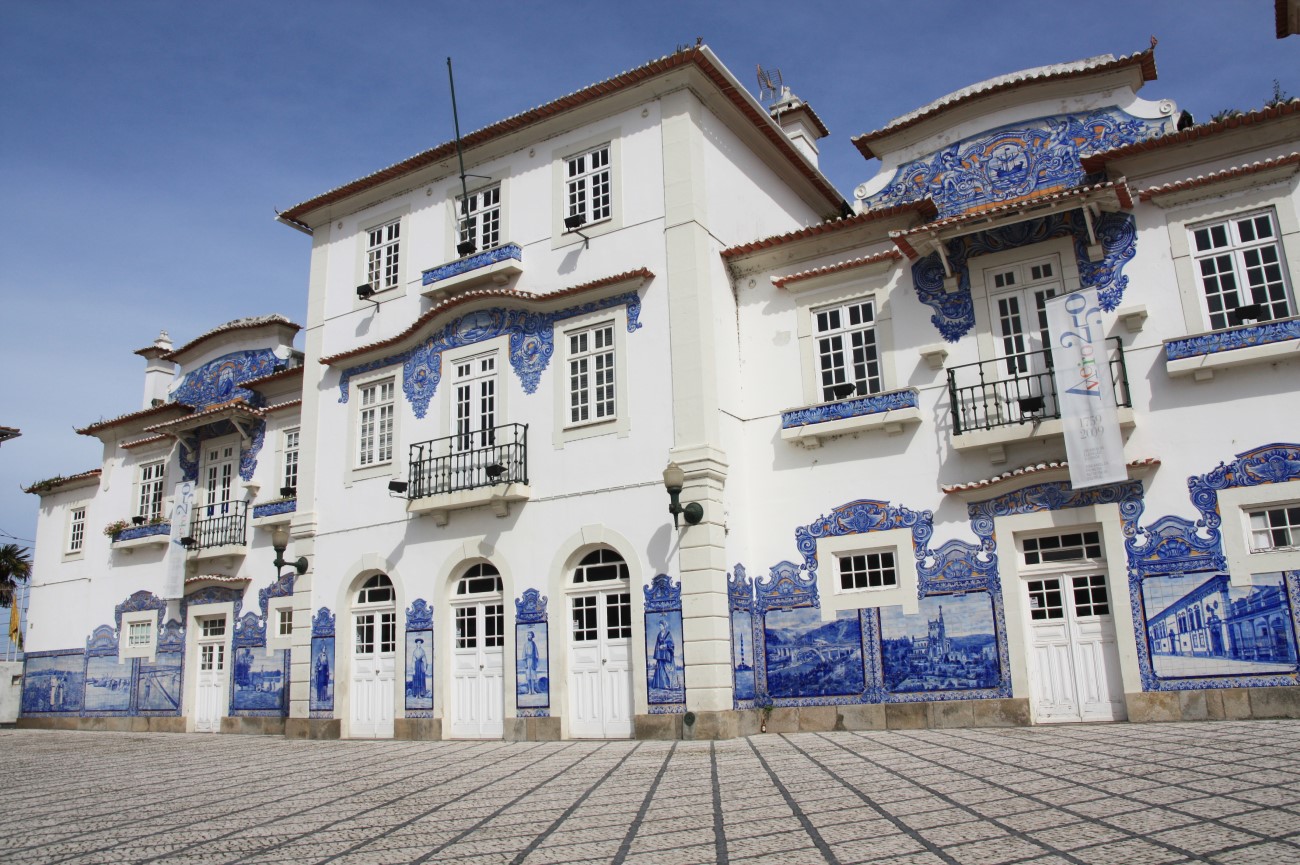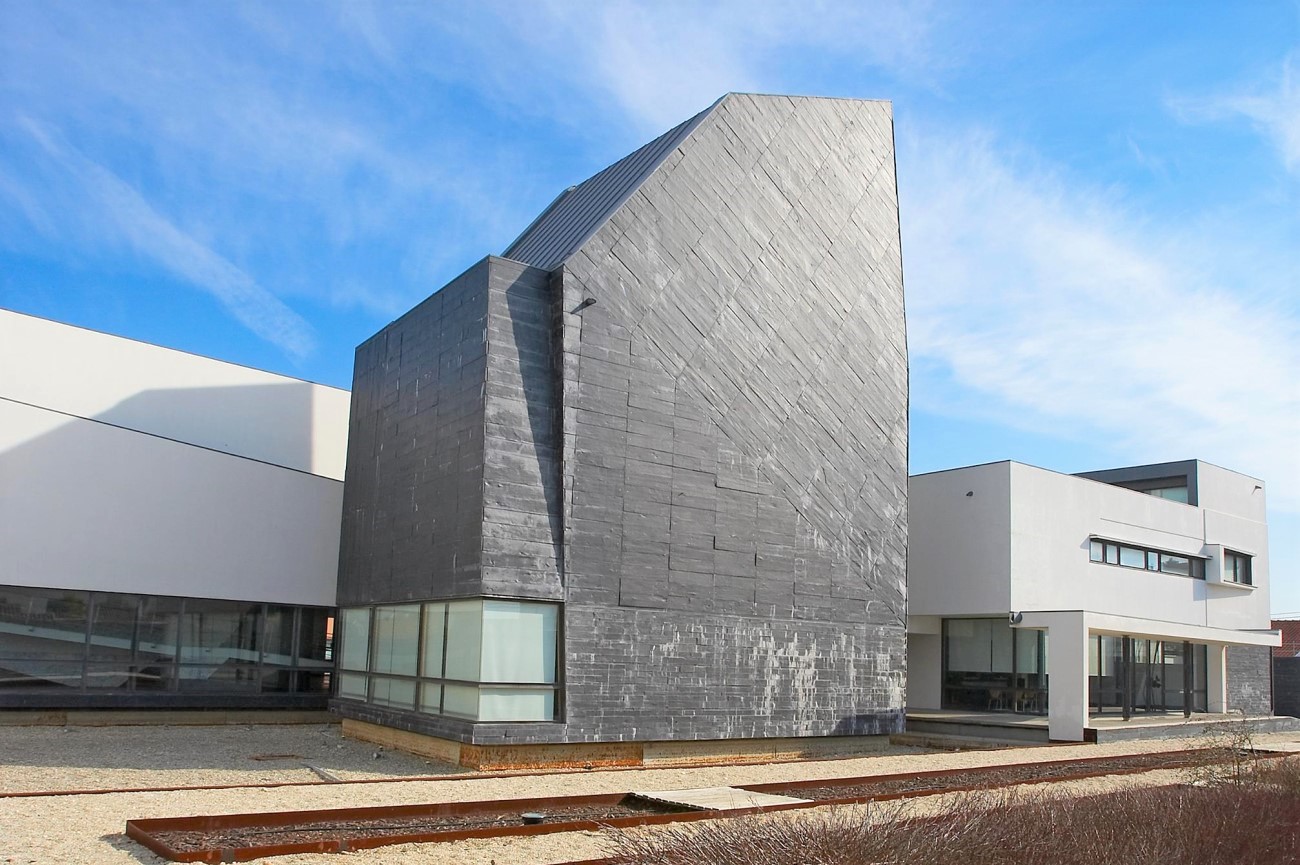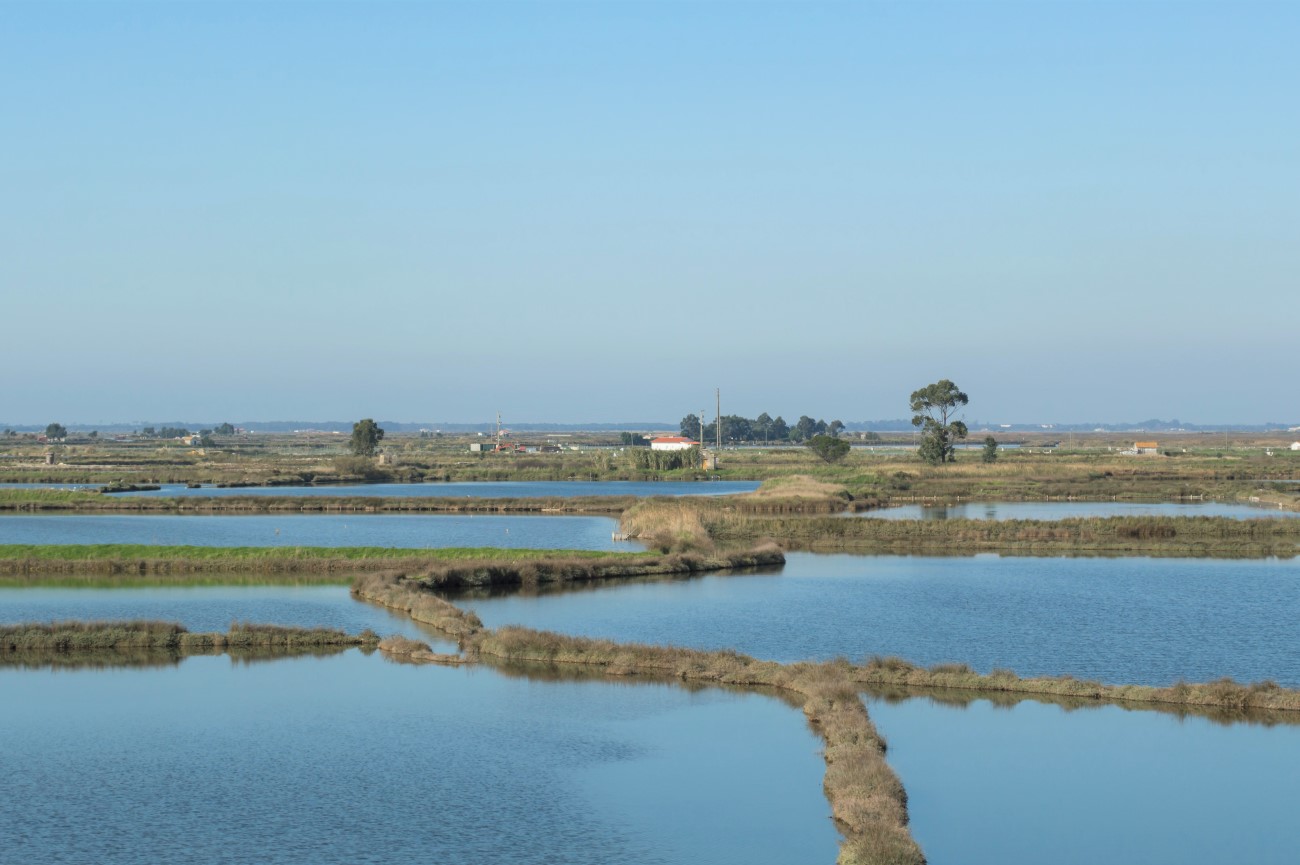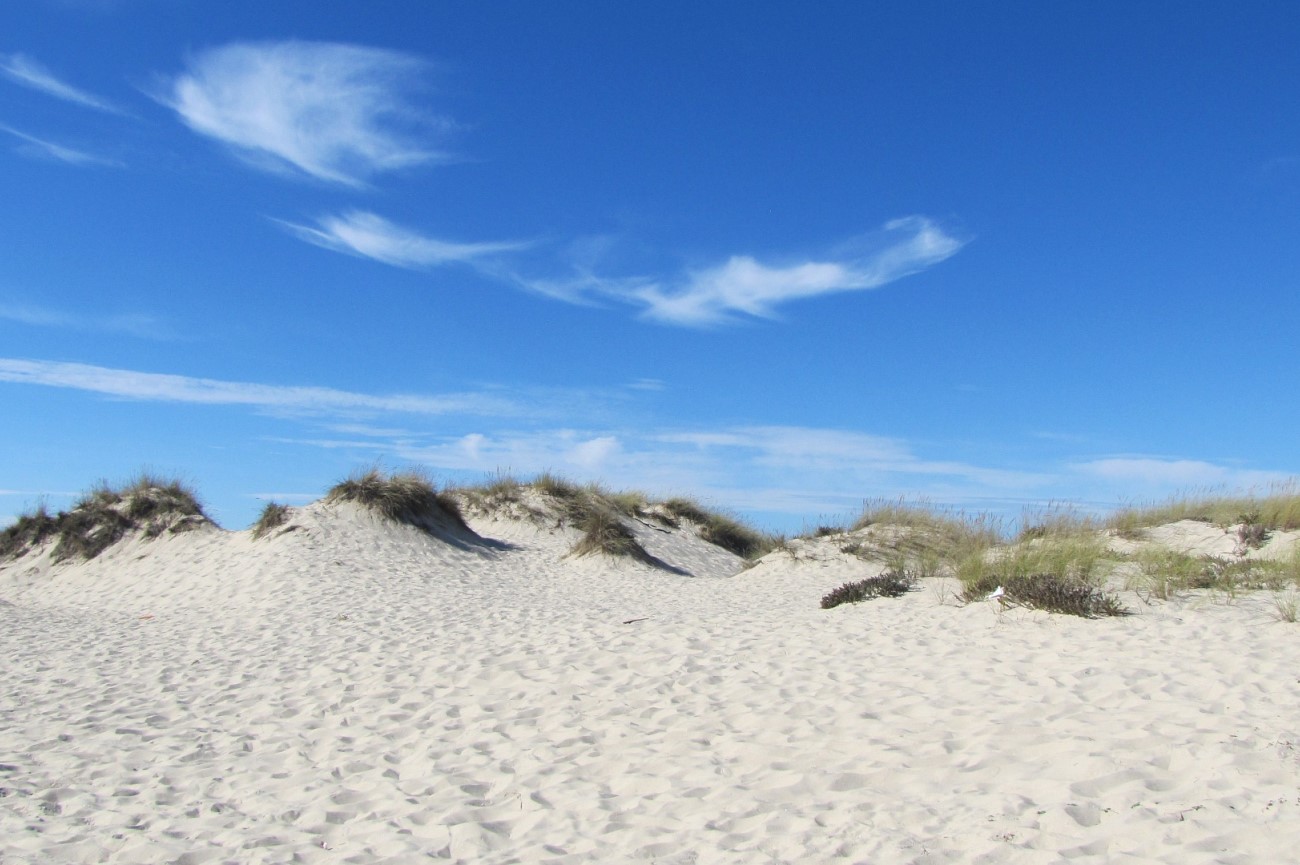Best Things to Do and See in Aveiro Portugal
Less than an hour's drive from Porto, the town of Aveiro, is a colorful and unique escape from the everyday.
Crisscrossed by canals and dotted with pastel-painted art nouveau buildings, history, culture, and natural beauty come together to create a memorable visitor experience.
If you are thinking of making a day trip to Aveiro or staying in the region, here are the best things to do and see in Aveiro, Portugal!
Visit the Museu de Aveiro
The Aveiro Museum contains a wide-ranging collection of religious items, including Renaissance paintings, sculptures, and jewelry. The building in which the museum is located was a 15th century monastery known as Mosteiro de Jesus. The Portuguese Princess Joana lived her during the final years of her life and when you enter the museum, one of the first things you will see is her intricately detailed marble tomb. Princess Joana opposed several marriage proposals and instead joined the Dominican Convent of Jesus, housed in this monastery, in 1475. This religious devotion lead to her beatification in 1693 by Pope Innocent XII.
Other high points of the museum include the chapel and central courtyard. Be sure to check out the nave and apse of the chapel and take some time to admire the gilded woodwork and tiles depicting the life of Princess Joana.
Head to the Beach
Like many places in Portugal, Aveiro has some amazing beaches.
Praia da Barra
Less than 10 km from the city center, Praia da Barra can provide a much-needed beach escape. Situate where the Ria de Aveiro, or Aveiro lagoon, meets the Atlantic ocean, the north end of the beach is protected by long breakwaters, providing calm waters that are perfect for swimming. The southern portion of the beach is open water, characterized by sand dunes and a long wooden boardwalk. This southern section is popular with surfers and is where you will find the surf school, should you want a lesson before hitting the water.
Costa Nova
Just outside of town is the fishing village of Costa Nova. If you've booked a guided tour of Aveiro, it's likely you will make a visit here. If you've planned your own trip, be sure to include Costa Nova.
This village is known for its colorfully striped houses. These palheiros were once used by fishermen to store their gear but now they are used as vacation homes.
Praia da Costa Nova is characterized by sand dunes and is the perfect place to catch a little sun or cool off in the water. Because it is farther along the coast and not shielded like Praia da Barra, the water here is not nearly as calm.
But, perhaps the most incredible thing to experience in Costa Nova is the fish market! Mercado do Peixe dates to the 18th century and it is the perfect place to sample fresh fish straight from the water. Order some whelks, crabs, goose barnacles, or shrimp and it will be prepared as you wait. If you are not hungry, pay the market a visit anyway. If you visit in the morning you will catch the market in full swing. The sights and sounds are as authentic as they came and provide an unparalleled glimpse into Portugal's rich fishing traditions.
Climb the Farol da Barra
Located at Barra beach, and standing 62 meters in height, Farol da Barra is the tallest lighthouse in Portugal.
Built in 1893, the lighthouse helped protect ships from the dangerously shallow ocean waters that surround Aveiro. On Wednesday afternoons, the public is allowed to scale the 271 steps to the platform that offers spectacular views of the lagoon, Praia da Barra, Costa Nova, Aveiro as well as Sao Jacinto and Gafanhas.
Go on a Moliceiro Tour
Often called "the Venice of Portugal," Aveiro is a city of canals. One of the best ways to see Aveiro is from the canal while taking a Moliceiro tour. Moliceiros are brightly painted boats similar to gondolas. Historically, these boats were used for seaweed harvesting. The seaweed was then used as a fertilizer.
A tour will typically take about 45 minutes and provide you with background details of the city, it's architecture and art nouveau style, and the salt farms that border the lagoon.
This is one activity that you do not have to book in advance. There will be plenty of boats available so just show up at the dock and hop on!
Visit the Old Train Station
If you are traveling to Aveiro from Lisbon via train, you will be blown away by the train station. If you are reaching the city by car or bus, we recommend you make time to visit the station.
The old terminal, completed in 1916, is decorated with Portugal's famous blue azulejos. These tiles depict many scenes including molicerios, men and women in regional dress, salt farms, and Aveiro's canals.
Now over a century old, the old train station provides a glimpse into the rich history and traditions of Aveiro.
Sample Ovos Moles and Tripas de Aveiro
It would be foolish to visit Aveiro without sampling some of the local treats.
Ovos moles are traditional sweets, made of egg yokes and sugar. Historically, they were made by nuns in the town's old convents with the recipe being passed on to the townspeople as these institutions began to close. The most popular version of these treats are cased in rice paper and hand-shaped to resemble welk and crab shells. You can find them in pastry shops all over town but Maria da Apresentacao is where you'll find the best.
Tripas de Aveiro are similar to crepes but made with a thicker dough. The fillings can include, jam, chocolate, or ovos moles.
Visit the Maritime Museum of Ilhavo
Just south of Aveiro is the town of Ilhavo which is where you will find the Museu Maritimo de Ilhavo. This modern maritime museum pays tribute to Portugal's maritime history with a special focus on cod fishing.
Inside you will find a replica of the trawlers that would sail as far as Newfoundland to collect their catch. The museum also features tools of the trade, details on what life was like the boat, and the history and culture of fishing in the region.
One of the most popular things to see in the museum is the aquarium loaded with Atlantic cod.
Visit Ecomuseu Marinha da Troncalhada
Make your way to the edges of the Ria de Aveiro lagoon to visit the Ecomuseu Marinha da Troncalhada. An open-air museum, this is where you can come to learn all about the salt farms and the traditional methods of salt production. You can take a walk around the salt ponds and read the information panels or book a guided tour.
Nearby is a small spa where you can take a dip in a salt pool while watching the saltern workers go about their day. The spa is only open from May to October, however, so if you are really wanting to do this, plan accordingly.
Explore the Sao Jacinto Dunes Natural Reserve
For nature lovers, the Sao Jacinto Dunes Natural Reserve is a must-see. The 700-hectare reserve lies between the lagoon and the ocean.
The network of trails runs through the nearby woods and traverses the sand dunes. The setting is perfect for bird watching and hiking. There is an 8km loop that takes about 3 hours to complete but will let you see the whole reserve.
To reach the reserve, you can catch a ferry from Barra beach or travel around the lagoon by car, although this route will take much longer than the ferry.
Aveiro is a charming city that offers a little something to travelers of all sorts. Whether you are interested in history, architecture, food, or nature, there is something for you to explore and enjoy in Aveiro.
For more ideas on how to spend your time in Aveiro, check out our itinerary here. Contact us today for help planning your own dream holiday in Portugal!


